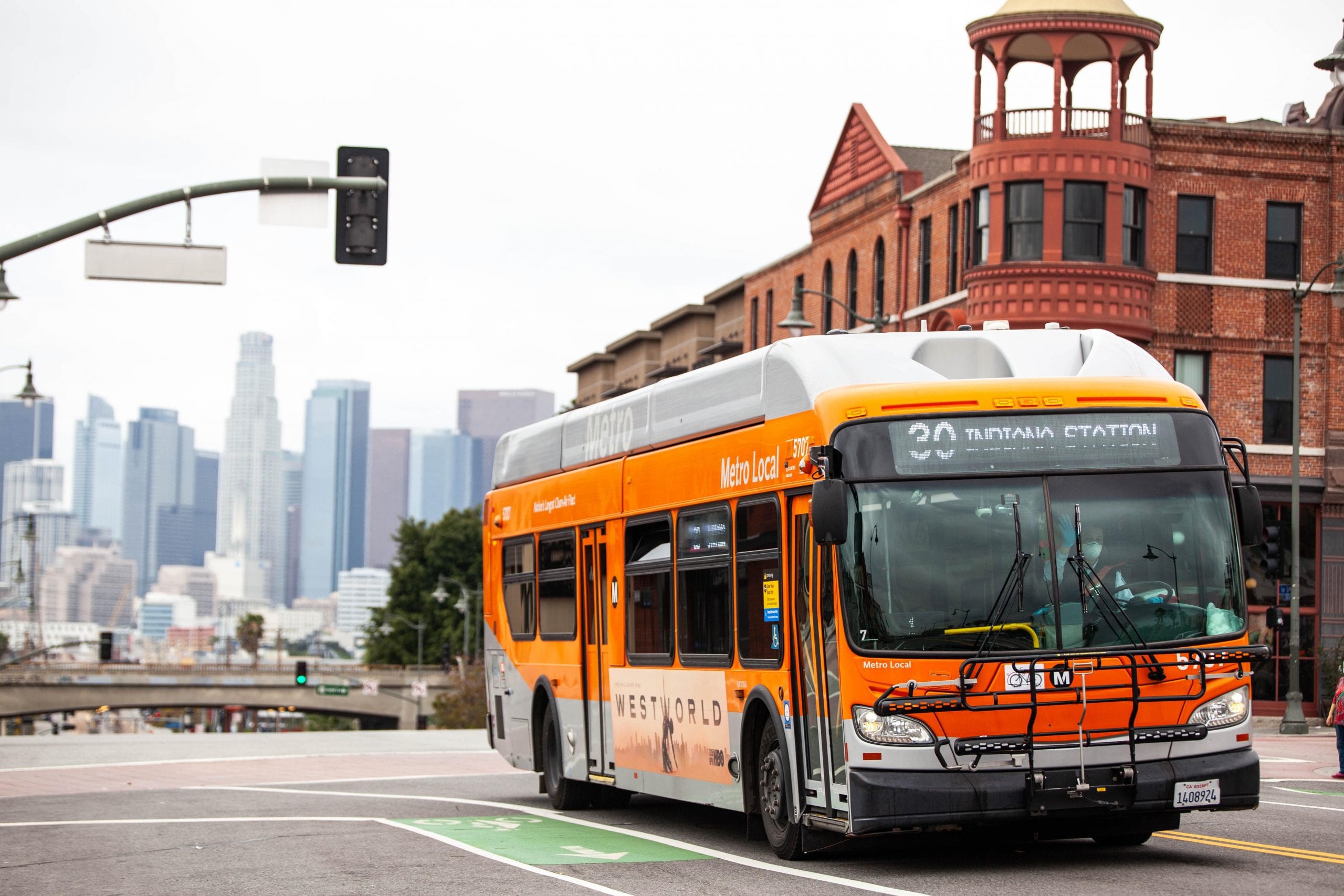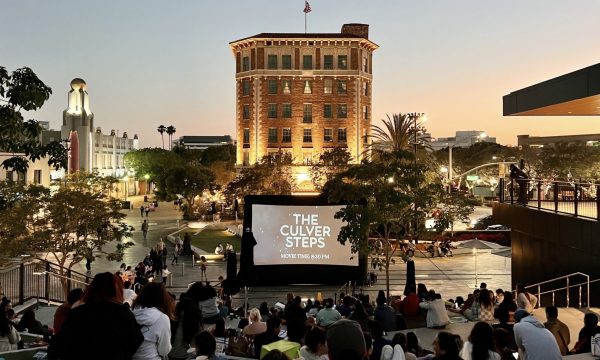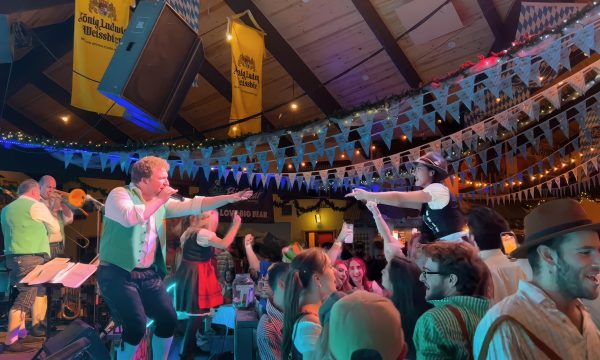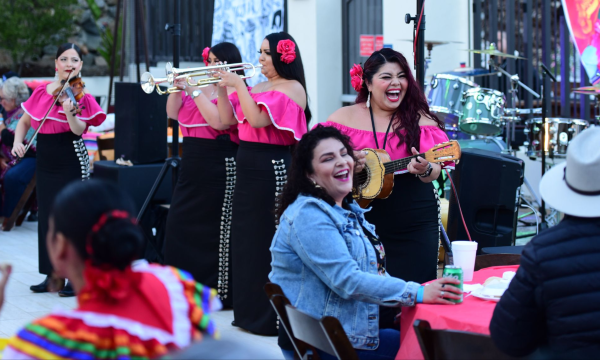Mayor Eric Garcetti today announced two new priority bus lanes on Grand Avenue and Olive Street in Downtown Los Angeles, which will speed service for weekday riders on the heavily utilized routes.
"Our bus network is the backbone of our transportation system, and these bus lanes are a clear next step toward faster and more reliable service, higher ridership, and lower emissions," said Mayor Eric Garcetti. "We are working tirelessly to make our system work better for Angelenos, and this project is a clear example of the type of improvements that will take Angelenos where they need to go faster, and more safely and sustainably."
The two new lanes, a result of Metro's NextGen Bus Plan, will run southbound on Grand Avenue from Hope Place to Pico Boulevard and northbound on Oliver Street from Pico Boulevard to 2nd Street. By turning the routes into priority lanes, Metro will increase service speed and reliability, with buses now traveling on the route as often as every minute.
Bus priority lanes have been proven to increase bus speeds by 15% or more and improve the safety of a street. In a recent survey of more than 300 riders along this corridor, 96% of respondents said they would use the route more often if Metro improved trip times.
"We expect these dedicated lanes to improve bus speeds by up to 15 percent, which means getting our riders to their destinations faster and greatly enhancing the customer experience through better service reliability," said Metro CEO Stephanie Wiggins. "We want to build on the success of our earlier bus-only lanes in downtown Los Angeles to make Metro the best transportation option for Angelenos and visitors alike."
Mayor Garcetti has made the overhaul of Metro's Bus Service a focus during his time serving on the Metro Board. Last summer, Mayor Garcetti launched the second phase of the Metro NextGen Bus Plan, restoring hundreds of new bus trips on weekdays and weekends ahead of schedule, with a focus on additional mid-day bus service.
After the final phase of the NextGen Bus Plan is implemented Sunday, December 19, 83 percent of riders will have access to buses arriving every five to 10 minutes — compared to only 48 percent before the plan. In addition to increasing the number of bus lines running every five to 10 minutes from 16 to 29 on weekdays and two to 14 on weekends, the plan will also more than double the number of residents who live within walking distance of bus lines that run every five to 10 minutes — from 900,000 to almost 2.2 million.
"Our partnership with Metro is transforming how people move through Downtown L.A. and beyond," said Los Angeles Department of Transportation (LADOT) General Manager Seleta Reynolds. "Bus lanes move more people, more quickly to ease congestion and make it more enjoyable to get around the city."
Mayor Garcetti has pushed Metro and LADOT to create and accelerate some of the most ambitious sustainability goals in the nation — including the commitment to fully electrify Metro's bus fleet by 2030 and LADOT's fleet by 2028.
In October of this year, Mayor Garcetti celebrated the full electrification of the Metro G Line (Orange), marking the full phase out of Metro's natural gas-powered buses on the line and fulfilling a motion the Mayor introduced in 2016 to convert the route to all-electric buses. In June 2021, the Board approved $50 million for the J Line (Silver) Charging Infrastructure Program, a significant step forward for the greater J Line conversion project, which is expected to be fully electrified within two years.
For more information on the Grand Avenue and Olive Street Bus Priority Lane Projects, visit: metro.net/grand-av-olive-st.














